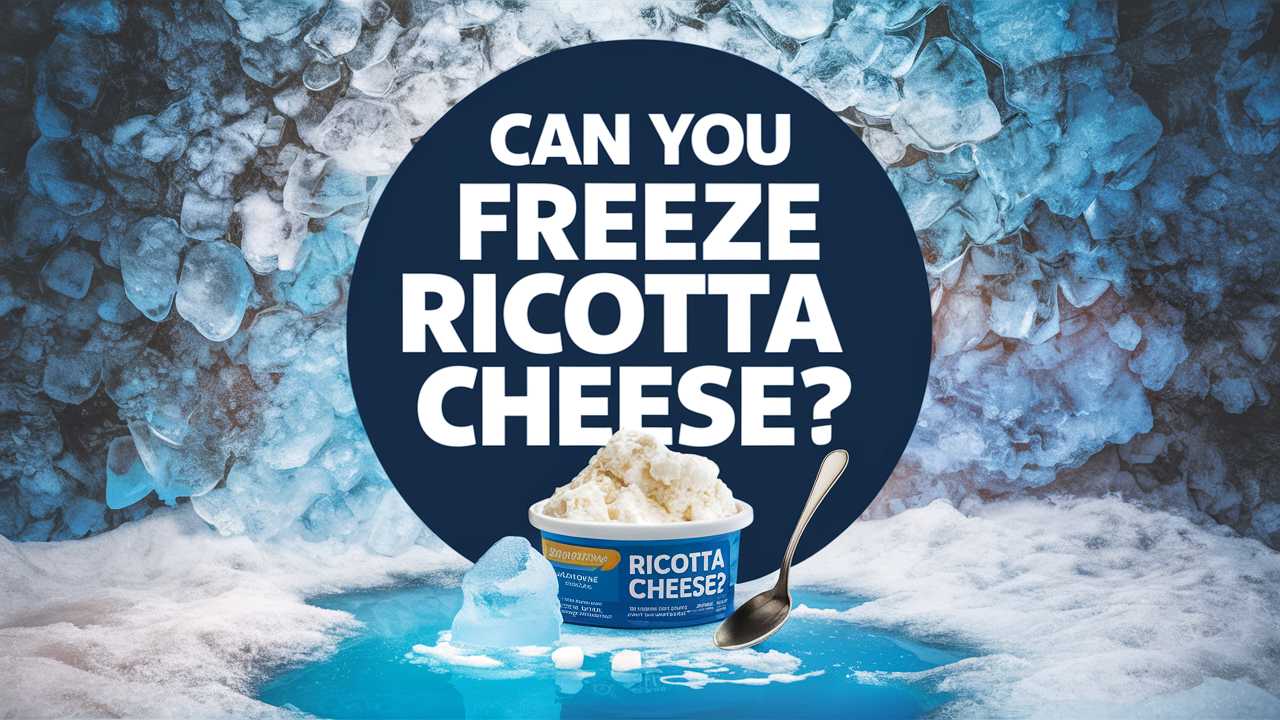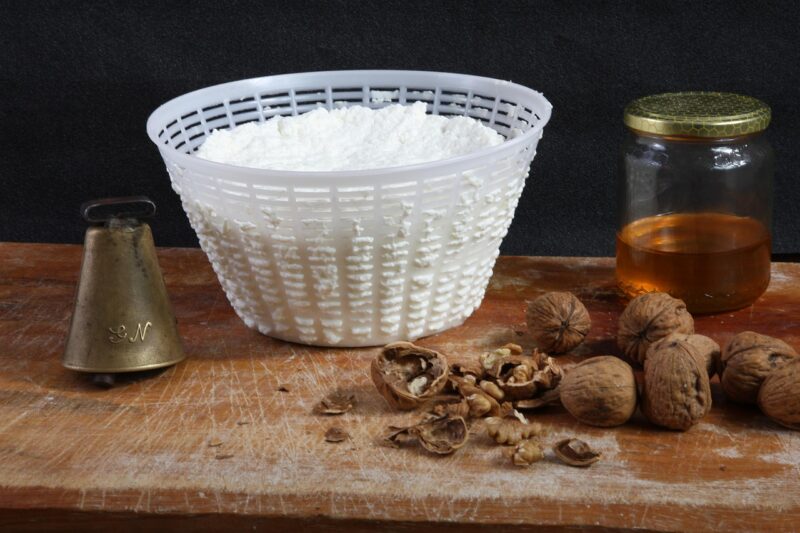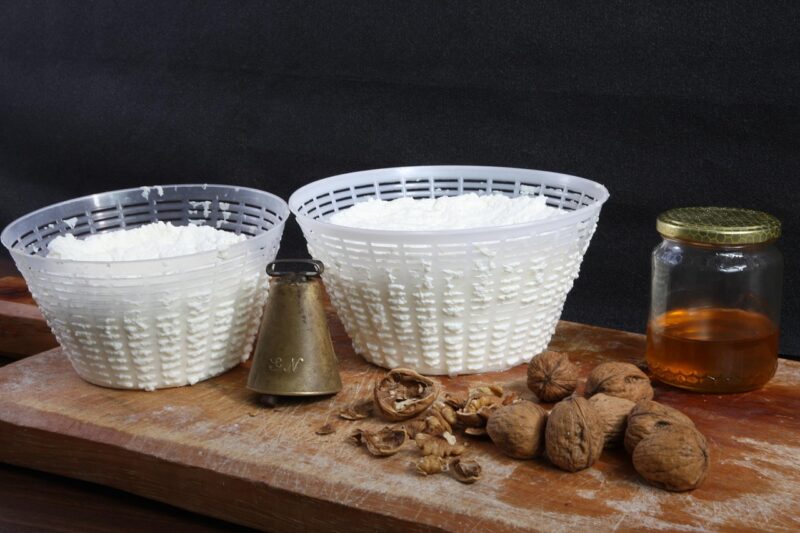In this post, we’ll explore the ins and outs of freezing ricotta cheese, including the how-tos, benefits, potential pitfalls, and delicious ways to use it after freezing. Join me as we journey through the nuances of this delightful dairy staple.
Can You Freeze Ricotta Cheese?
So, let’s answer the burning question: can you freeze ricotta cheese? The short answer is yes! Freely jumping into this venture can save you money, minimize waste, and allow you to enjoy your favorite recipes without planning trips to the store. However, there are specific methods and considerations to keep in mind for a successful freezing experience.
How to Freeze Ricotta Cheese
Choose Your Ricotta Wisely: Always start with fresh ricotta. It should be within its expiration date and free from any sour odors. Freshness ensures the best flavor and texture after thawing.
Portion Control: Consider how you’ll use ricotta in the future. It’s often best to freeze it in smaller portions, such as 1-cup servings. This way, you can thaw just what you need for a recipe, minimizing waste.
Prepare for Freezing: Place the ricotta in an airtight container or heavy-duty freezer bag. If you’re using a bag, squeeze out all the air before sealing. This helps prevent freezer burn.
Labeling: Clearly label each container or bag with the date and amount. This step helps you keep track of how long it has been in the freezer and organizes your ingredients.
Freezing: Lay your containers flat in the freezer until they are completely frozen. If using bags, they can stack easily, saving space.
Thawing: When you’re ready to use the ricotta, transfer it to the refrigerator to thaw slowly. This can take several hours or overnight. For a quicker option, you can place sealed ricotta under cold running water, but avoid microwaving it as that can alter its texture.
The Impact on Texture and Flavor
While freezing ricotta is completely doable, it’s important to note that the freezing process can impact its texture. After thawing, the cheese may appear more crumbly and watery. This change is due to the separation of the whey. A good trick to restore some creaminess is to stir the ricotta after thawing. Adding a bit of cream or milk can also help bring back a smooth consistency.
Benefits of Freezing Ricotta Cheese
Now that we’ve covered the how-to, let’s talk about the benefits of freezing ricotta cheese. As a fervent advocate of minimizing food waste, I’m all in for strategies that help us get the most out of our ingredients.
Cost-Effectiveness
Buying ricotta in bulk saves money, allowing you to stock up during sales or when you find high-quality options. Freezing allows you to stretch your dollar further and have ricotta ready for those quick weekday dinners.
Meal Prep Convenience
For those engaged in meal prepping, having frozen ricotta on hand can streamline your cooking. Whether you’re whipping up a lasagna on a busy night or need a creamy element in a savory breakfast dish, frozen ricotta is a fantastic shortcut.
Versatility
Ricotta shines in a variety of dishes. After freezing, it can still be used in the same recipes as fresh ricotta, from desserts like cannoli to savory stuffing for vegetables or pasta. The culinary possibilities remain as delightfully endless as ever.
Potential Pitfalls of Freezing Ricotta Cheese
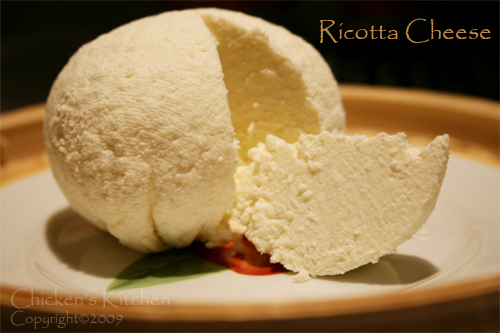
While freezing ricotta has its advantages, there are potential pitfalls to be aware of. Not everything is sunshine and butterflies in the freezing world, and knowledge is key to a successful experience.
Texture Loss
As mentioned earlier, the texture can suffer after being frozen. While many recipes can manage this change, if you’re using ricotta in a dish where the texture is paramount, such as a light cheesecake or delicate soufflé, frozen ricotta might not deliver the same results.
Freezer Burn
Improper storage can lead to freezer burn, which can ruin the flavor and texture of your cheese. Ensure that you remove as much air as possible from your storage container and keep the ricotta in the coldest part of your freezer.
Getting Creative with Leftover Ricotta
After understanding the freezing process and considerations, let’s explore some creative ways to use that ricotta cheese. Beyond lasagna and stuffed shells, this dairy delight can shine in various applications.
Sweet Treats
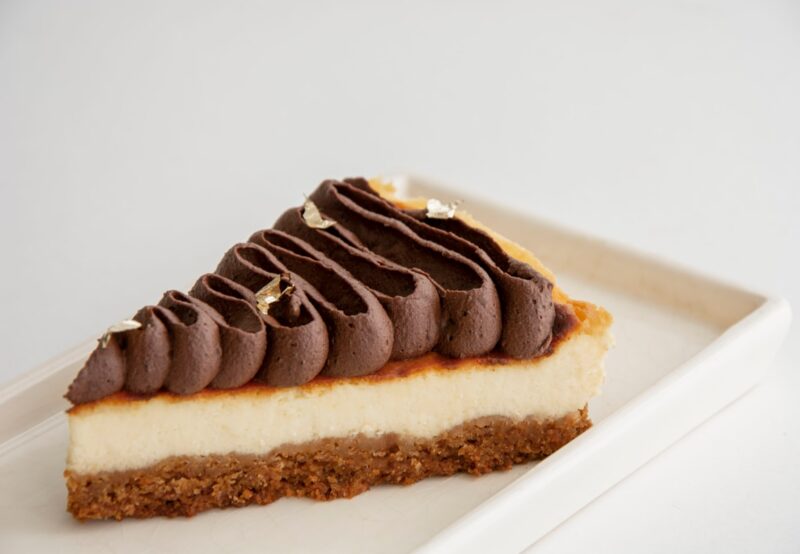
Ricotta Pancakes: These fluffy pancakes become a breakfast showstopper when enriched with ricotta. The cheese adds moisture without overwhelming the other flavors.
Dessert Parfaits: Layer ricotta with fresh fruit, honey, and granola for an elegant dessert that feels indulgent but is surprisingly healthy.
Cheesecakes: Using ricotta instead of cream cheese creates a lighter texture in cheesecakes. It’s particularly wonderful baked into a lemon or orange-flavored cheesecake for a refreshing finish.
Savory Dishes
Stuffed Vegetables: Picture bell peppers or zucchini filled with a mixture of ricotta, herbs, and spices. Baked until the vegetables are tender, this is an easy yet impressive dish.
Pasta Fillings: Homemade ravioli or tortellini filled with ricotta and spinach can become a family favorite. The filling retains its sweet creaminess and pairs beautifully with a range of sauces.
Savory Muffins or Scones: Incorporate ricotta into savory baked goods. The cheese adds moisture and depth, pair it with herbs or cheese for a delightful snack beside soup or salad.
Common Misconceptions About Freezing Ricotta Cheese
As with many culinary practices, freezing ricotta comes with a fair share of misconceptions. Let’s bust a few myths for better understanding.
Myth 1: Freezing Destroys All Texture
While it’s true that freezing affects texture, the extent of change depends on the dish. Many recipes, like baked dishes or those where the ricotta is mixed with other ingredients, can mask slight textural changes.
Myth 2: Ricotta Cheese is Not Worth Freezing
Ricotta can absolutely be frozen, and its convenience far outweighs any perceived drawbacks. Whether you semi-frequently cook with it or find yourself left with an extra tub, freezing is a practical option.
Storing Ricotta Cheese Properly
Proper storage before freezing is as crucial as the freezing process itself. Perhaps you bought ricotta for one recipe and don’t plan to use it all.
Fresh Ricotta Tips
Storage Duration: Store ricotta in the original packaging if unopened. Once opened, transfer it to an airtight container. Ideally, consume it within 3-5 days.
Avoid Contamination: Always use a clean utensil to scoop out cheese from the container. This practice minimizes bacteria transfer and preserves the cheese’s integrity.
Using Leftover Ricotta
If you find yourself with an open container, consider planning meals around it. Mixing it into sauces, adding to salads, or substituting it for cream in savory dishes allows you to utilize what you have effectively.
Exploring Alternatives to Traditional Ricotta
Many who are dairy-free or lactose intolerant seek alternatives to ricotta. Thankfully, there are plenty of substitutes that also freeze well.
Vegan Alternatives
Tofu Ricotta: Blend silken tofu with nutritional yeast and a touch of lemon juice for a creamy, vegan alternative. This mixture also freezes well, making it a great substitution in baked dishes.
Cashew Ricotta: Soaked cashews blended with lemon juice, salt, and a little water produce a rich and creamy product. This alternative is creamy and versatile, yielding excellent results in sweet and savory dishes.
Store-bought Vegan Ricotta: Many brands now offer ricotta-style vegan cheese. After checking the ingredient list for health considerations, most freeze well and can easily substitute ricotta in recipes.
Conclusion: Embracing Ricotta Cheese in All Its Forms
In summary, freezing ricotta cheese is not only possible but can be a smart strategy to elevate your culinary adventures. With careful attention to storage and understanding how to use it afterwards, you can enjoy this delightful ingredient in various forms.
Embarking on a journey with ricotta means exploring sweet and savory realms of cooking, preserving your grocery budget, and practicing resourcefulness in your kitchen. The versatility of ricotta, coupled with its adaptability in the freezer, opens up endless possibilities for home cooks and bakers alike.
So the next time you find yourself with a tub of ricotta cheese, smile at the options ahead. Whether you’re crafting a beloved family lasagna, experimenting with a new dessert, or simply saving some for later, embracing the world of ricotta can be a delightful experience. Give it a try, and you might just find it becomes a staple in your kitchen repertoire!


